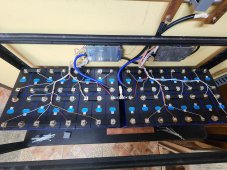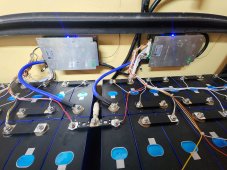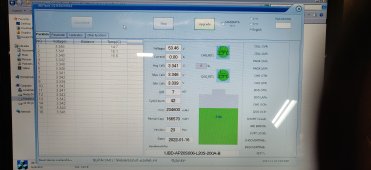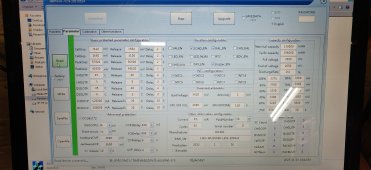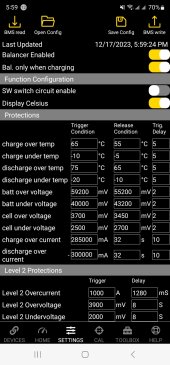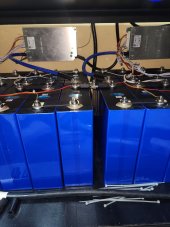Hello everyone.
I'm having some difficulties here with my solar system. I only have couple days with it and I'm new to this. I have 2 jbd 200amp bms. Each with 16 batteries. But one of the BMS's indicates charge overcurrent. And usually starts at 50% batteries capacity. So it shuts down and couple seconds later starts up again and shuts down and on. During the day it still reaches 85-90% charge. But after Sun is down switches are on But there is no discharge. Only from the other bms. So of I turn of the working bms the other ones comes on. And if I switch the other on this one shuts down. We have the 2 sets of batteries with each fuse ran through one same wire. Would that be a problem? I have no idea where to go from here. And batteries were top balanced. They actually keep balanced even when it says current overcharged
I'm having some difficulties here with my solar system. I only have couple days with it and I'm new to this. I have 2 jbd 200amp bms. Each with 16 batteries. But one of the BMS's indicates charge overcurrent. And usually starts at 50% batteries capacity. So it shuts down and couple seconds later starts up again and shuts down and on. During the day it still reaches 85-90% charge. But after Sun is down switches are on But there is no discharge. Only from the other bms. So of I turn of the working bms the other ones comes on. And if I switch the other on this one shuts down. We have the 2 sets of batteries with each fuse ran through one same wire. Would that be a problem? I have no idea where to go from here. And batteries were top balanced. They actually keep balanced even when it says current overcharged



